One critical factor determines the difference between brands that thrive and those that merely survive. That’s their creative team structure. While 73% of companies report that creativity drives their business growth, many struggle with inefficient creative workflows that lead to brand inconsistency, missed market opportunities, and frustrated stakeholders.
The challenge is organizing the team in a way that maximizes their potential while serving your business objectives. Whether you’re a startup looking to establish your first creative department or a scaling enterprise seeking to optimize your existing structure, understanding the nuances of different creative team models is essential for sustainable growth.
Understanding the Creative Team: More Than Just Design
A creative team serves as the strategic backbone of your brand’s visual and narrative identity. These professionals are responsible for translating complex business objectives into compelling stories that resonate with your target audience across multiple touchpoints.
Modern creative teams encompass a diverse ecosystem of specialists who work collaboratively to bring brand visions to life. Their responsibilities extend beyond traditional advertising to include user experience design, content strategy, social media engagement, video production, and digital storytelling. In essence, they’re the architects of your brand’s emotional connection with customers.
The strategic importance of creative teams has never been higher. Research from McKinsey shows that companies with strong creative capabilities are 3.5 times more likely to outperform their peers in revenue growth. This statistic underscores why choosing the right creative team structure is more than just an operational decision; it’s a competitive advantage.
Core Roles That Drive Creative Excellence
Building an effective creative team requires understanding the specialized roles that contribute to successful creative outcomes:
- Creative Directors and Brand Strategists serve as the visionary leaders who ensure all creative outputs align with broader business objectives. They’re responsible for maintaining brand consistency while pushing creative boundaries to keep the brand relevant and engaging.
- Graphic Designers and Visual Artists transform abstract concepts into tangible visual assets. These professionals must be versatile across print, digital, and interactive media while staying current with design trends and technological capabilities.
- Content Creators and Copywriters craft the narrative voice of your brand. They develop everything from website copy and social media content to campaign messaging and thought leadership pieces that establish your company’s authority in the marketplace.
- Digital Marketing Specialists bridge the gap between creative vision and performance metrics. They ensure that creative assets not only look impressive but also drive measurable business results across various marketing channels.
- Video Production Teams have become increasingly critical as video content dominates digital engagement. These specialists handle everything from product demonstrations and customer testimonials to social media content and brand documentaries.
- User Experience (UX) and User Interface (UI) Designers focus on creating intuitive, engaging digital experiences that guide users through your brand’s digital ecosystem while maintaining visual consistency and usability standards.
The Five Primary Creative Team Structures: A Strategic Analysis
1. Centralized Creative Teams: Unified Vision, Streamlined Control
The centralized model consolidates all creative functions under a single department that serves the entire organization. This structure creates a creative hub where brand guidelines are strictly maintained, and resources are allocated efficiently across different business units.
Strategic Advantages:
- Ensures unwavering brand consistency across all touchpoints
- Eliminates duplicate efforts and maximizes resource utilization
- Creates clear approval processes and quality control mechanisms
- Facilitates better budget management and strategic planning
Potential Challenges:
- Can create bottlenecks during peak demand periods
- May struggle to understand nuanced departmental requirements
- Often results in longer turnaround times for urgent requests
- Risk of becoming disconnected from the specific business unit needs
Best Fit Scenarios: Large enterprises with strong brand governance requirements, companies in regulated industries, or organizations where brand consistency is paramount to market positioning.
2. Embedded Creative Teams: Deep Integration, Rapid Response
Embedded structures place creative professionals directly within specific business units or departments. This approach ensures that creatives develop deep domain expertise and can respond quickly to departmental needs while maintaining close collaboration with their internal stakeholders.
Strategic Advantages:
- Enables rapid response to departmental creative needs
- Develops specialized knowledge of specific business areas
- Improves collaboration between creative and non-creative teams
- Allows for more personalized creative solutions
Potential Challenges:
- Risk of brand inconsistency across different departments
- Possible duplication of creative efforts and resources
- Difficulty in sharing best practices across embedded teams
- Challenges in managing career development for embedded creatives
Best Fit Scenarios: Technology companies with diverse product lines, organizations with distinct business units serving different markets, or companies where speed-to-market is critical.
3. Matrix Creative Teams: Balanced Approach, Dual Accountability
The matrix structure combines elements of both centralized and embedded models. Creative professionals report to both a centralized creative leader for strategic direction and to departmental heads for project execution. This dual-reporting relationship aims to balance brand consistency with departmental responsiveness.
Strategic Advantages:
- Balances brand consistency with departmental flexibility
- Promotes cross-functional collaboration and knowledge sharing
- Allows for resource sharing across different projects
- Provides career development opportunities across multiple areas
Potential Challenges:
- Complex reporting relationships can create role confusion
- Potential for conflicting priorities between different managers
- Requires strong communication and coordination mechanisms
- Can slow decision-making due to multiple approval layers
Best Fit Scenarios: Medium to large organizations with complex project requirements, companies managing global campaigns with local customization needs, or businesses undergoing organizational transformation.
4. Pod-Based Creative Teams: Agile Excellence, Focused Delivery
Pod-based structures organize creatives into small, autonomous teams dedicated to specific projects, products, or client accounts. Each pod operates as a self-contained unit with diverse skill sets working collaboratively from project inception to completion.
Strategic Advantages:
- Promotes agility and rapid project execution
- Encourages innovation through focused team collaboration
- Enables specialization in specific product areas or market segments
- Facilitates clear accountability and ownership
Potential Challenges:
- Risk of resource imbalances across different pods
- Potential for knowledge silos and reduced collaboration
- Complexity in managing multiple autonomous teams
- Difficulty in maintaining consistent quality standards
Best Fit Scenarios: Creative agencies, media companies, software development organizations, or businesses managing multiple distinct product lines simultaneously.
5. Hybrid Creative Teams: Strategic Flexibility, Optimized Resources
The hybrid model represents the evolution of creative team structures, combining core in-house capabilities with strategic partnerships with freelancers, agencies, and specialized consultants. This approach allows organizations to maintain essential creative functions internally while accessing specialized expertise and additional capacity as needed.
Strategic Advantages:
- Provides maximum flexibility to scale resources up or down
- Access to specialized skills without long-term commitments
- Cost-effective approach to managing variable creative demands
- Ability to tap into diverse perspectives and industry expertise
Potential Challenges:
- Requires strong project management and coordination skills
- Need for robust processes to maintain brand consistency
- Potential communication challenges with external partners
- Complexity in managing multiple vendor relationships
Best Fit Scenarios: Growing businesses with fluctuating creative needs, seasonal businesses, startups with limited budgets, or companies requiring specialized expertise for specific projects.
Aligning Structure with Business Context
Industry-Specific Requirements
- Technology and SaaS Companies benefit from embedded or matrix structures that align with agile development methodologies. The fast-paced nature of technology requires creative teams that can iterate quickly and collaborate closely with product development teams.
- Retail and E-commerce Organizations often thrive with pod-based or hybrid structures that can handle frequent product launches, seasonal campaigns, and promotional activities. The ability to scale creative resources during peak seasons while maintaining efficiency during slower periods is crucial.
- Professional Services Firms typically benefit from centralized structures that ensure consistent brand representation across all client interactions and maintain the professional standards expected in B2B environments.
- Healthcare and Financial Services often require centralized structures due to strict regulatory requirements and the need for consistent compliance messaging across all creative outputs.
Growth Stage Considerations
- Early-stage startups should prioritize flexibility and cost-effectiveness by adopting hybrid models that enable them to access high-quality creative services without the overhead of a full in-house team.
- Scaling Companies need structures that can grow with them, often transitioning from hybrid to matrix or centralized models as they establish more formal processes and brand guidelines.
- Established Enterprises require sophisticated structures that can handle complex, multi-channel campaigns while maintaining brand consistency across global markets and diverse product lines.
The Case for Hybrid Creative Models
The hybrid creative team model has emerged as the optimal solution for many modern organizations, offering a strategic balance of consistency, flexibility, and cost-effectiveness. This approach recognizes that creative needs vary significantly based on project type, timeline, and specialized requirements.
Financial Optimization
Hybrid models provide significant cost advantages by allowing organizations to maintain lean core teams while accessing specialized expertise only when needed. This approach can reduce creative department costs by 30-40% compared to fully staffed in-house teams while maintaining quality standards.
Access to Specialized Expertise
The creative landscape is increasingly specialized, with experts in areas like motion graphics, user experience design, content strategy, and digital marketing. Hybrid models provide access to this specialized talent without the overhead of maintaining full-time positions in every specialty area.
Scalability and Risk Management
Hybrid structures provide natural scalability, allowing organizations to ramp up creative resources for major campaigns or product launches while scaling back during quieter periods. This flexibility also includes risk management benefits by reducing fixed costs and maintaining operational agility.
Quality and Innovation Benefits
External creative partners bring fresh perspectives, industry best practices, and specialized tools that can enhance the overall quality of creative outputs. This external input can prevent internal teams from becoming insular and help maintain creative innovation.
Best Practices for Creative Team Success
Establishing Clear Governance
Regardless of the structure chosen, successful creative teams require clear governance frameworks that define decision-making processes, quality standards, and brand guidelines. This includes establishing approval workflows, feedback mechanisms, and performance metrics.
Technology and Process Integration
Modern creative teams rely heavily on collaborative technologies, project management systems, and creative software. Ensuring seamless integration of these tools across internal and external team members is crucial for maintaining efficiency and quality.
Performance Measurement and Optimization
Effective creative teams require robust measurement frameworks that track both creative performance (engagement, brand awareness, conversion rates) and operational efficiency (turnaround times, cost per asset, resource utilization).
Continuous Learning and Development
The creative industry evolves rapidly, requiring ongoing investment in team development, skills training, and exposure to new technologies and methodologies. This is particularly important in hybrid models where external partners need to stay aligned with internal standards and objectives.
Conclusion
The structure of your creative team is a strategic decision that directly impacts your brand’s ability to compete, grow, and connect with customers. While there’s no one-size-fits-all solution, the most successful organizations are those that align their creative structure with their business objectives, growth stage, and market requirements.
The trend toward hybrid models reflects the modern reality that creative excellence requires both consistency and flexibility, both strategic thinking and tactical execution. By thoughtfully combining internal capabilities with external expertise, organizations can build creative teams that deliver exceptional results while maintaining operational efficiency.
The best structure is one that serves your specific business needs today while providing the flexibility to evolve as your organization grows. The investment in getting this structure right will pay dividends in brand strength, market competitiveness, and business growth for years to come.
Are you looking for remote solutions to scale your creative team?
At The Remote Reps, we match you with experienced remote content specialists who are trained to reach your industry, goals, and client expectations.


